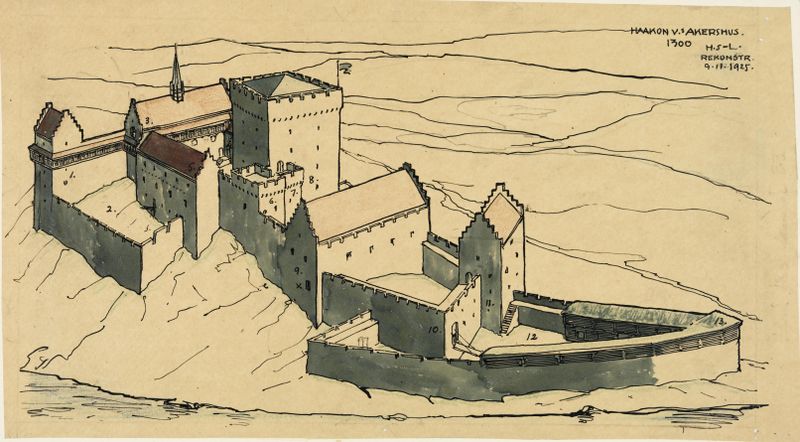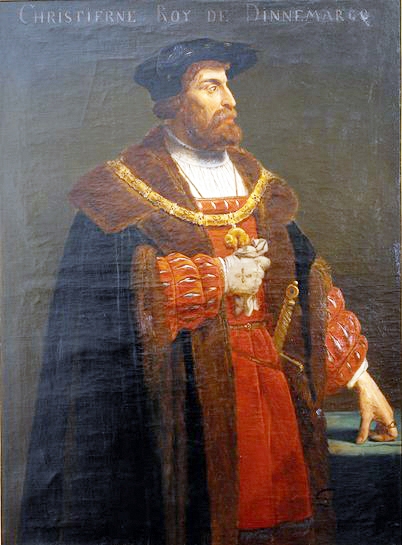The Knut Alvsson is, outside Norway, a name that few have ever heard. Still, the name represented one of the biggest riots in Norway’s history. Knut Alvsson was born in 1455 and was a wealthy farmer and landowner in Norway who then was a part of the Kalmar Union. From 1497 to 1499, he also was Chieftain at Akershus Fortress.
In 1497, Knut Alvsson’s power was too great, and many saw that Alvsson wanted to change things in Norway. He was, therefore, falsely accused of murder and had to flee the country to save his own life. This created a tense situation in eastern Norway where many favoured Alvsson’s side. Alvsson moved to Sweden for two years, while the tense situation escalated in Norway.
Some historians claim that Alvsson planned his coup from Sweden. This is because during his exile his relationship with King Hans remained anxious, and the King asked Henrik Krummedike to monitor Knut Alvsson’s movements. It became clear that Knut Alvsson tried to exploit the dissatisfaction between the farmers for his own benefit.

King Hans II of Norway, Sweden and Denmark. Painting by Unknown via Wikimedia Commons.
Knut Alvsson returned to Norway in 1500. When he came back, he travelled to the country to state his position as a relative of the late King Haakon V and donating valuable properties to the Norwegian church to gain support. It was now clear the Knut wanted to separate Norway from the Kalmar Union and declare himself as King with the blessing of the people and the church.
This marked the beginning of an open rebellion against King Hans who was in Denmark. At the same time, Svante Nilsson agitated for opposition in Sweden together with Sten Sture. On 27 July 1501, Knut Alvsson, along with the landlords, Sten Sture and Svante Nilsson officially went to drive the Danish king out of Sweden. The reason was that the King had broken the country’s laws and the covenant with the people, both in Norway and Sweden. However, an open battle did not occur until the autumn of the same year.
King Hans received a letter of independence from Sweden on August 9th. By this time, Knut had openly demanded that all foreign chieftains and troops from Denmark in Norway should be moved out of the country.

Akershus Fortress as it was during the Middle Ages. Photo: Wikimedia Commons.
The rebellion in Norway started first in November 1501, and first took place in Western Norway. Beyond the winter of 1502, it became apparent that there was a final settlement between the parties. King Hans worked through his handyman, Henrik Krummedike, whose task was to keep the union between Denmark and Norway in place.
The pace was eventually broken, and over the year, the atmosphere became more intense between the parties. Knut Alvsson operated more and more as a general and tried to conquer the fortifications in southern Norway in support of him. During the spring, he had conquered Akershus and Tunsberghus. He won Vika without great difficulty, but he managed not to conquer Bergenhus, even though he had the farmers in Hordaland with him.

Christian II was the final King of the Kalmar Union. Painting by Pål Haglstein via Wikimedia Commons.
Henrik Krummedike commanded the Danish troops at Båhus, and here it became a long-lasting siege. In the spring of 1502, it was clear that King Hans was about to lose the grip in Norway. Therefore, responsibility was laid on the King’s son, the later Christian II, who came to Norway for the first time. Båhus was, thus, liberated by an army mercenary, and Knut Alvsson had to withdraw.
On 11 August 1502, Knut Alvsson asked for negotiations on peace. The talks were held on the ship to Henrik Krummedike on 18 August, but the negotiations ended with Knut Alvsson being killed and the rebellion was over. Two years later, the Danes agreed that the goods for Mr Knut should be surrendered to his children. Knut Alvsson’s body remained without grave as long as to 1514 when Christian II was crowned. Knut Alvsson never became king of an independent Norway, as he had wanted.

